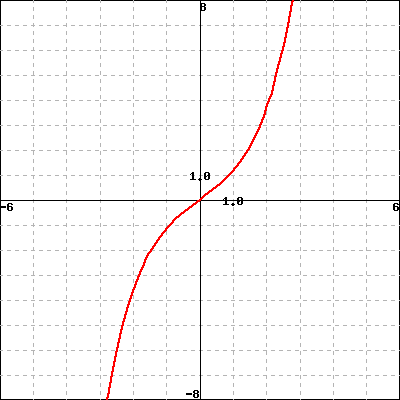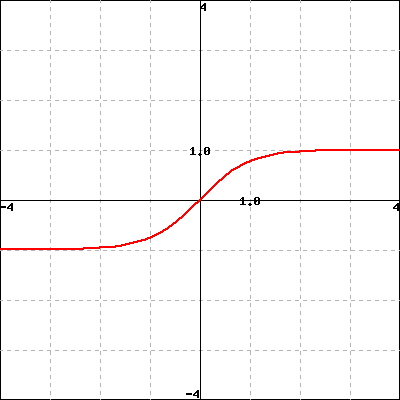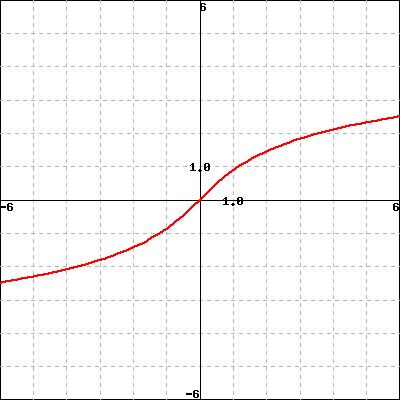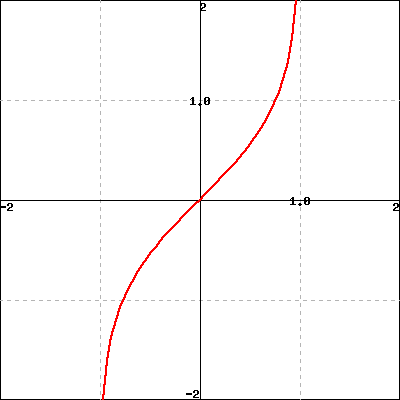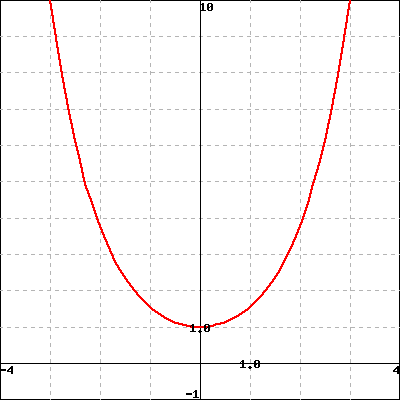A cable hanging between two supports will form the shape of a hyperbolic cosine. In particular, the formula
\begin{equation*}
y = \frac{T}{w}\cosh\left(\frac{wx}{T}\right),
\end{equation*}
where \(T\) is the tension at its lowest point and \(w\) is the weight of the cable per unit length, will yield the total cable sag when evaluated at \(x=0\text{.}\) We can calculate the total sag in a powerline hanging between two poles spaced 400 feet apart where the mass per unit length is \(50\) lb/ft and the tension at the lowest point is \(2025\) lbs. Specifically, the total sag is given by
\begin{equation*}
y = \frac{2025 \mbox{ lb}}{50 \mbox{ lb/ft}}\cosh\left(\frac{50\times 0}{2025}\right)=40.5 \mbox{ ft}.
\end{equation*}




